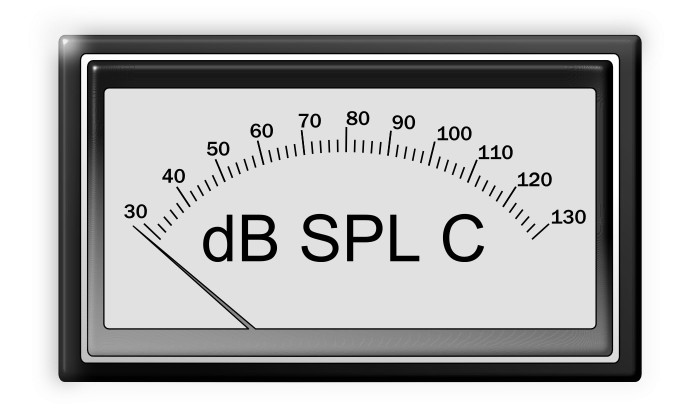“Loud” is a subjective sort of business.
Please Remember:
The opinions expressed are mine only. These opinions do not necessarily reflect anybody else’s opinions. I do not own, operate, manage, or represent any band, venue, or company that I talk about, unless explicitly noted.

 Want to use this image for something else? Great! Click it for the link to a high-res or resolution-independent version.
Want to use this image for something else? Great! Click it for the link to a high-res or resolution-independent version.The concept of “loud” is really amorphous, especially when you consider just how important it is to live shows. A show that’s too loud for a given situation will quickly turn into a mess, in one way or another. Getting a desired signal “loud enough” in a certain monitor mix may be key to a great performance.
And yet…”loud” is subjective. Perceived changes in level are highly personalized. People tolerate quite a bit of level when listening to music they like, and tolerate almost no volume at all when hearing something that they hate. One hundred decibels SPL might be a lot of fun when it’s thumping bass, but it can also be downright abrasive when it’s happening at 2500 Hz.
Twice As Loud
Take a look at that heading. Do you realize that nobody actually, truly knows what “twice as loud” means?
People might think they know. You’ll hear statements like “people generally think 6 dB is about twice as loud,” but then later someone else will say, “people perceive a 10 dB difference to be twice as loud.” There’s a range of perception, and it’s pretty sloppy when you actually do the math involved.
What I mean is this. The decibel is a measure of power. (You can convert other things, like voltage and pressure, into power equivalents.) Twice the power is 3 dB, period. It’s a mathematical definition that the industry has embraced for decades. It’s an objective, quantitative measurement of a ratio. Now, think about the range of perception that I presented just now. It’s a little eyebrow raising when you realize that the range for perceiving “twice as loud” is anywhere from 4X to 10X the power of the original signal. If a 1000 watt PA system at full tilt is the baseline, then there are listeners who would consider the output to be doubled at 4000 watts…and other folks who wouldn’t say it was twice as loud until a 10kW system was tickling its clip lights!
It’s because of this uncertainty that I try (and encourage others to seriously consider) communicating in terms of decibels. Especially in the context of dialing up a PA or monitor rig to everybody’s satisfaction, it helps greatly if some sort of quantitative and objective reference point is used. Yes, statements like “I need the guitar to be twice as loud,” or “I think the mix needs 10% more of the backup singers” ARE quantitative – but they aren’t objective. Do you need 3dB more guitar? Six decibels? Ten? Do you want only 0.4 dB more of the backup singers? (Because that’s what [10 log 1.1] works out to.) Communicating in decibels is far less arbitrary.
(The irony of using a qualitative phrase like “far less” in the context of advocating for objective quantification is not lost on me, by the way.)
The Meter Is Only Partially Valid As An Argument
Even if nobody actually knows what “twice as loud” means, one thing that people do know is when they feel a show is too loud.
For those of use who embrace measurement and objectivity, there’s a tendency that we have. When we hear a subjective statement, we get this urge to fire up a meter and figure out if that statement is true. I’m all for this behavior in many scenarios. Challenging unsubstantiated hoo-ha is, I think, one of the areas of pro-audio that still has some “frontier” left in it. My opinion is that more claims need to be challenged with the question, “Where’s your data?”
But when it comes to the topic of “loud,” especially the problem of “too loud,” whipping out an SPL meter and trying to argue on the basis of objectivity is of only narrow appropriateness. In the case of a show that feels too loud for someone, the meter can help you calibrate their perception of loud to an actual number that you can use. You can then decide if trying to achieve a substantially lower reading is feasible or desirable. If a full-on rock band is playing in a room, making 100 dBC at FOH without the PA even contributing, and one person thinks they only ought to be 85 dB C…that one person is probably out of luck. The laws of physics are really unlikely to let you fulfill that expectation. At the same time, you have to realize that your meter reading (which might suggest that the PA is only contributing three more decibels to the show) is irrelevant to that person’s perception.
If something is too loud for someone, the numbers from your meter have limited value. They can help you form a justifying argument for why the show level is where it is, but they’re not a valid argument all by themselves.